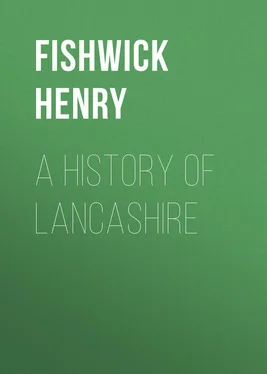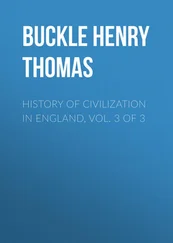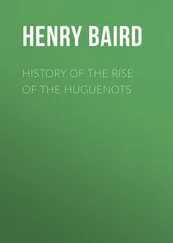Henry Fishwick - A History of Lancashire
Здесь есть возможность читать онлайн «Henry Fishwick - A History of Lancashire» — ознакомительный отрывок электронной книги совершенно бесплатно, а после прочтения отрывка купить полную версию. В некоторых случаях можно слушать аудио, скачать через торрент в формате fb2 и присутствует краткое содержание. Жанр: foreign_antique, foreign_prose, на английском языке. Описание произведения, (предисловие) а так же отзывы посетителей доступны на портале библиотеки ЛибКат.
- Название:A History of Lancashire
- Автор:
- Жанр:
- Год:неизвестен
- ISBN:нет данных
- Рейтинг книги:4 / 5. Голосов: 1
-
Избранное:Добавить в избранное
- Отзывы:
-
Ваша оценка:
- 80
- 1
- 2
- 3
- 4
- 5
A History of Lancashire: краткое содержание, описание и аннотация
Предлагаем к чтению аннотацию, описание, краткое содержание или предисловие (зависит от того, что написал сам автор книги «A History of Lancashire»). Если вы не нашли необходимую информацию о книге — напишите в комментариях, мы постараемся отыскать её.
A History of Lancashire — читать онлайн ознакомительный отрывок
Ниже представлен текст книги, разбитый по страницам. Система сохранения места последней прочитанной страницы, позволяет с удобством читать онлайн бесплатно книгу «A History of Lancashire», без необходимости каждый раз заново искать на чём Вы остановились. Поставьте закладку, и сможете в любой момент перейти на страницу, на которой закончили чтение.
Интервал:
Закладка:
At Lancaster was another station, and probably a very early one, as it is certain that in the time of Trajan (A.D. 98–117) there were Roman buildings of some kind here; the proof of this is the discovery, about twenty years ago, beneath the floor of the parish church, of a triangular–shaped stone upon which was inscribed in letters 2 inches high, Imp. Ner. Traian, avg. C.; this being completed would read, “Imperatori Nervae Trajano Augusto cohors.” 36 36 “The Palatine Note–book,” iv. 201.
On the site of, or within the area of the castrum have been erected the castle, the priory, and the church, so that it is not to be wondered at that its original boundaries are indefinable. Without placing too much reliance upon the statements of such writers as Leland and Camden, sufficient fragments of the Roman walls have from time to time been exhumed to afford ample proof that such a station existed; and from inscriptions found, together with the discovery of large quantities of horses’ teeth, it may be assumed to have been occupied by cavalry troops only.
The remains found within the walls and in the immediate neighbourhood have been very numerous and varied. Amongst the altars was one dedicated “to the holy god Mars Cocidius,” the latter word referring to a British god, which shows the accommodating spirit of “Vibinius Lucius,” the pensioner of the Consul who thus “performed his vows.” From the fact that over many parts of the station uncovered there was found to be a thick layer of ashes, it is conjectured that Roman Lancaster was destroyed by fire. Many milestones have also been found, and two burial–places. There was also a road from Lancaster to Overborough; its route was over Quernmore and through Caton, where a milestone of the time of Hadrian was discovered. In Lonsdale north of the Sands we have no distinct trace of Roman occupation.
There were, of course, several other Roman roads of later date and of minor importance; one only of these is it necessary to refer to, that is, the road which is supposed to have run from Manchester, through Chadderton, Royton, Rochdale, Littleborough, and over Blackstone Edge to Aldborough in Yorkshire. John Ogilby, the King’s cosmographer in 1675, states that this road was 8 yards wide and paved with stone all the way. Warburton, the Somerset Herald, shows it as a Roman road in his map drawn in 1753; later writers, however, do not agree as to its exact course, and nearly all trace of it has long ago disappeared, except for a short distance on the steep side of Blackstone Edge, where its course can be fairly traced from Windy Bank, near Littleborough, to the division line between Lancashire and Yorkshire. The portion best preserved is that which ascends the hill in a perfectly straight line, commencing about 1,600 yards from the summit. The parts which have been recently cleared from the overgrowth of heath show a road 15 feet wide, exclusive of curbstone, paved with square blocks of stone, and slightly arched to throw the water into a trench which runs on either side. In the centre of this road, where it ascends the hill at a steep gradient (in some parts one in four and a third), is a course of hard millstone grit stones, which have been carefully tooled and set together so as to form a continuous line from the top to the bottom. These blocks are of stone, are 3 feet 8 inches wide, and in them has been cut (or as some think worn) a trough about 17 inches wide at the top, and a little over a foot at the bottom, and of a depth of some 4 inches. The bottom of this trough is found to be slightly curved. The question as to the use and age of these central stones has been the subject of much discussion. The author of Roman Lancashire gives them a Roman origin, and thinks the groove was to steady the central wheel of a three–wheeled vehicle. An easy explanation would be that the stones were worn hollow by the feet of packhorses, but the reply to this is, that on a well–paved road up a steep hill, a footway of smooth stones would not only be useless, but dangerous. Another theory is that the Romans placed them there to help the drivers of chariots to “skid” the wheels of their vehicles, whilst some have urged that the central trough is of much more recent date, and was used in working the quarries at the top of the hill. 37 37 Fishwick’s “History of Rochdale,” p. 7; also Lanc. and Ches. Arch. Soc. , p. 73 et seq.
Roman coins and tiles have been found near Littleborough and at Underwood, near Rochdale; and at Tunshill in Butterworth, in the same parish, in 1793, was discovered the right arm of a silver statue of Victory, to which was attached an amulet with an inscription to the Sixth Legion. 38 38 Ibid. , p. 12.
From this rapid survey of the Roman roads, stations, and settlements, with the evidence of the vestiges which time has preserved for our inspection, it must at once be seen that through the length and breadth of Lancashire (except, perhaps, Lonsdale north of the Sands) the all–conquering Roman was found, and that for nearly four centuries he held possession. That he did much to educate and civilize the conquered tribes cannot be doubted, and the Lancashire people at the close of the Roman occupation must have been a very different race to those half–naked barbarians who fought so desperately to defend their soil against the invading legions. Although the ancient Briton was not quite an untutored savage, still, the influence of the higher cultured Romans had a very material effect upon his character and surroundings, and led to the acquirement of many arts and industries, which produced corresponding results of prosperity and comfort. The culture of the land was improved, the people were shown how to make roads and build houses of stone, mines were opened, iron was smelted, and ships were built.
CHAPTER V
THE SAXON AND THE DANE
If it is true – as generally supposed – that the Britons, after being grievously oppressed by the Picts and Scots, called in the German tribes to assist them, then it naturally followed that, after driving back the Northern invaders, they themselves took possession of the land they had been fighting for.
In Lancashire, the desertion of the Romans probably led to a considerable part of the county being again laid waste, and the inhabitants scattered.
All authorities agree that for some forty years after the departure of the Romans the Britons were in continual strife, and that their independence brought to them only war and misery. The three Teutonic tribes known to the Romans as the Jutes, the Saxons and the Angles, in A.D. 449 appear to have called themselves Englishmen, and in that year they won their first battle against the Britons at Aylesford, in Kent. After this it took nearly 150 years to acquire the land from the South to the Forth. The Northern parts were for the most part taken possession of by the Angles, and divided into kingdoms, the boundaries of which are not known; some authorities place part of Lancashire in the kingdom of Deira, which had York for its centre, whilst others maintain that the kingdom of Strathclyde extended southward to the banks of the Dee; be this as it may, towards the close of the sixth century Lancashire formed part of the kingdom of Northumbria, which was held by the Angles. The inhabitants of these Northern parts, in their contests with the invaders, had the great advantage of having possession of the Roman strongholds, and no doubt offered a stubborn resistance. With the new rulers came new names, new language, and new customs, and many things that had been established by the former invaders were swept away.
We now come to the introduction of Christianity into Northumbria, which arose through the marriage of Æthelbert, King of Kent, at the close of the sixth century, with Bertha, daughter of King Charibert of Paris, who, being a convert to the Christian religion, made it a condition of her marriage that she should be allowed to worship in a small Roman–built church near Canterbury. Early in the next century Edwin, King of Northumbria, married Æthelburga, the daughter of Æthelbert, who, also being a Christian, took with her Paulinus, a follower of St. Augustine (see Chapter IX. Конец ознакомительного фрагмента. Текст предоставлен ООО «ЛитРес». Прочитайте эту книгу целиком, купив полную легальную версию на ЛитРес. Безопасно оплатить книгу можно банковской картой Visa, MasterCard, Maestro, со счета мобильного телефона, с платежного терминала, в салоне МТС или Связной, через PayPal, WebMoney, Яндекс.Деньги, QIWI Кошелек, бонусными картами или другим удобным Вам способом.
).
Интервал:
Закладка:
Похожие книги на «A History of Lancashire»
Представляем Вашему вниманию похожие книги на «A History of Lancashire» списком для выбора. Мы отобрали схожую по названию и смыслу литературу в надежде предоставить читателям больше вариантов отыскать новые, интересные, ещё непрочитанные произведения.
Обсуждение, отзывы о книге «A History of Lancashire» и просто собственные мнения читателей. Оставьте ваши комментарии, напишите, что Вы думаете о произведении, его смысле или главных героях. Укажите что конкретно понравилось, а что нет, и почему Вы так считаете.












